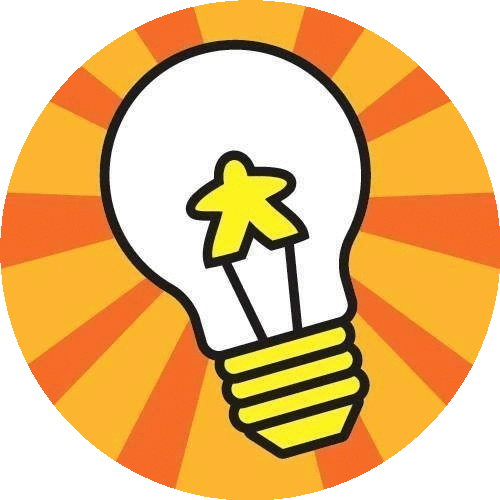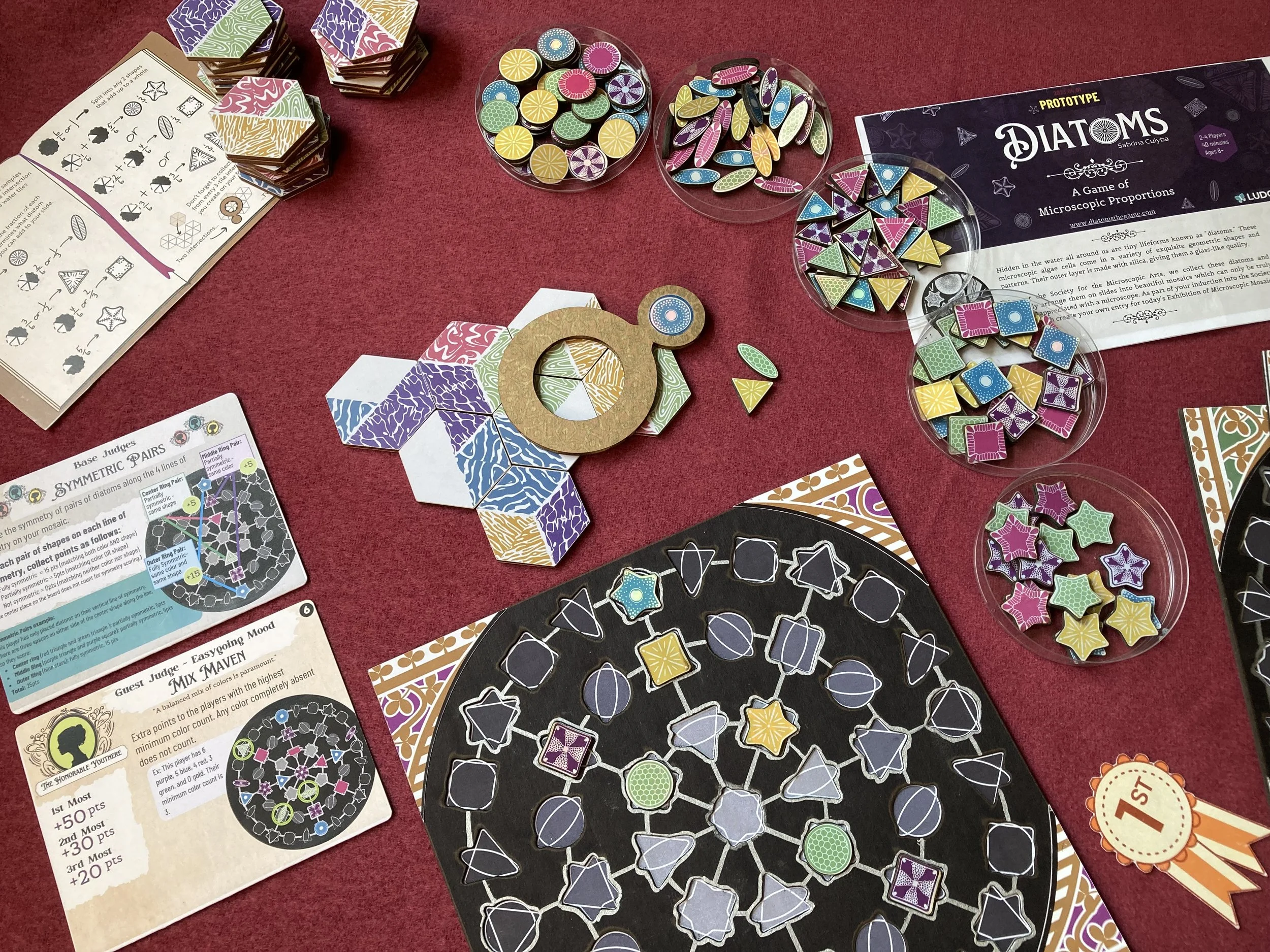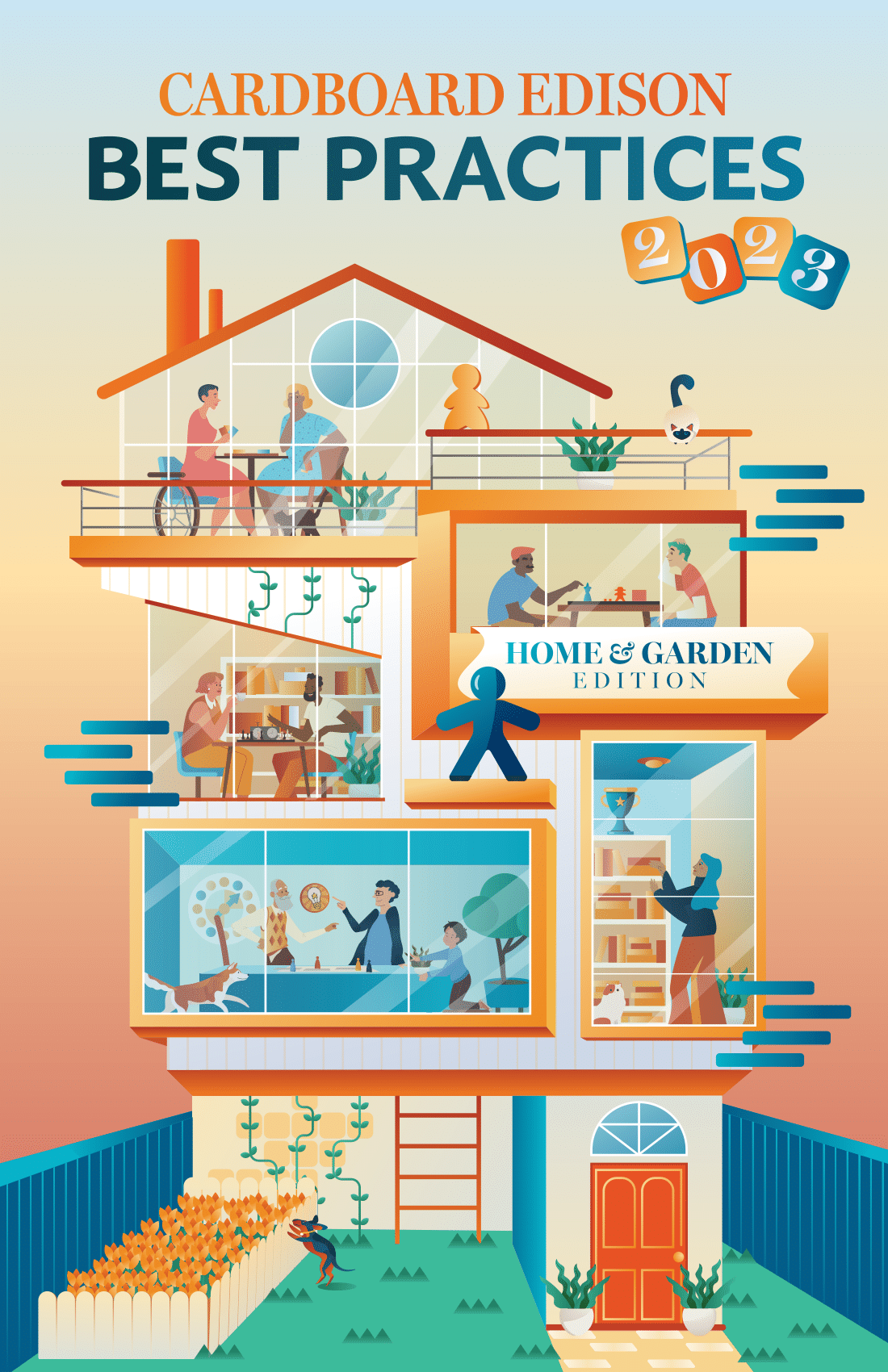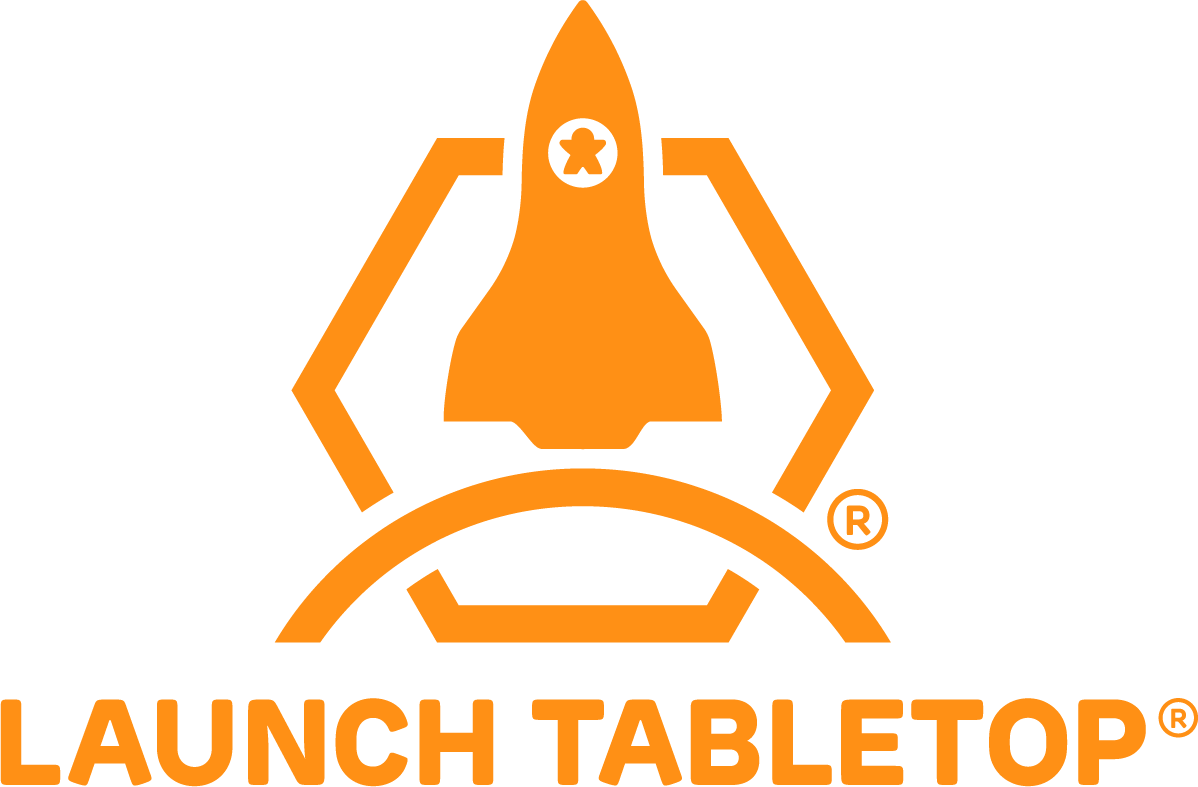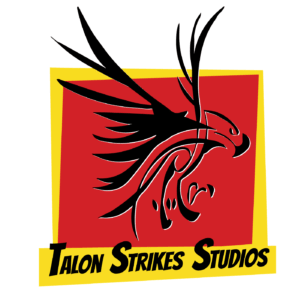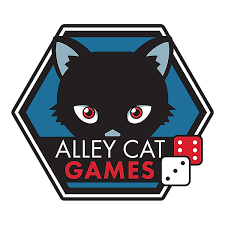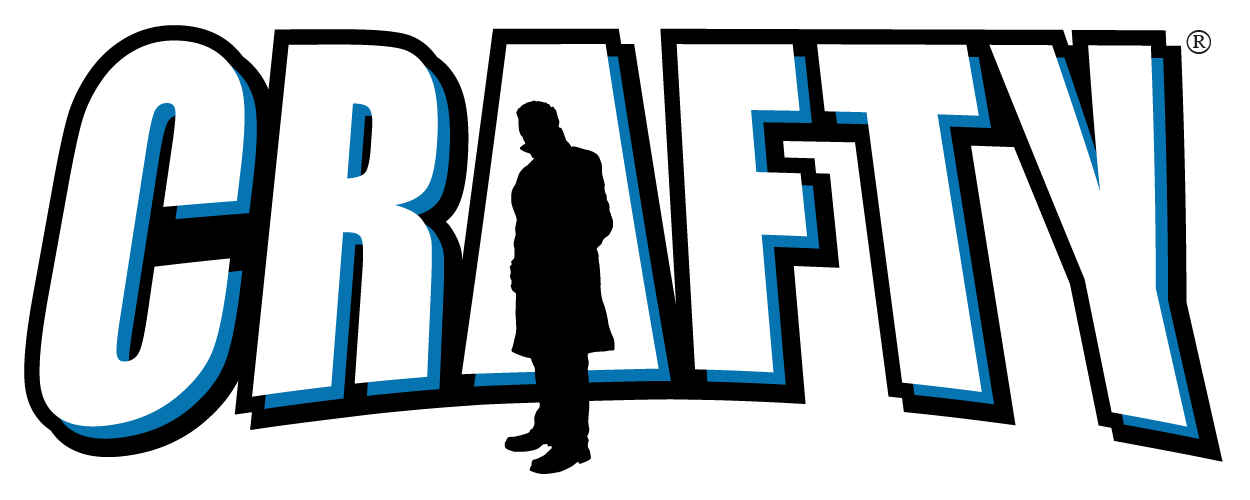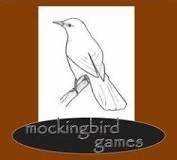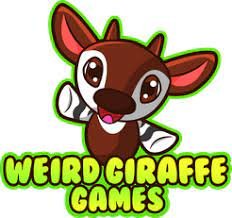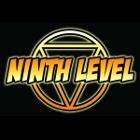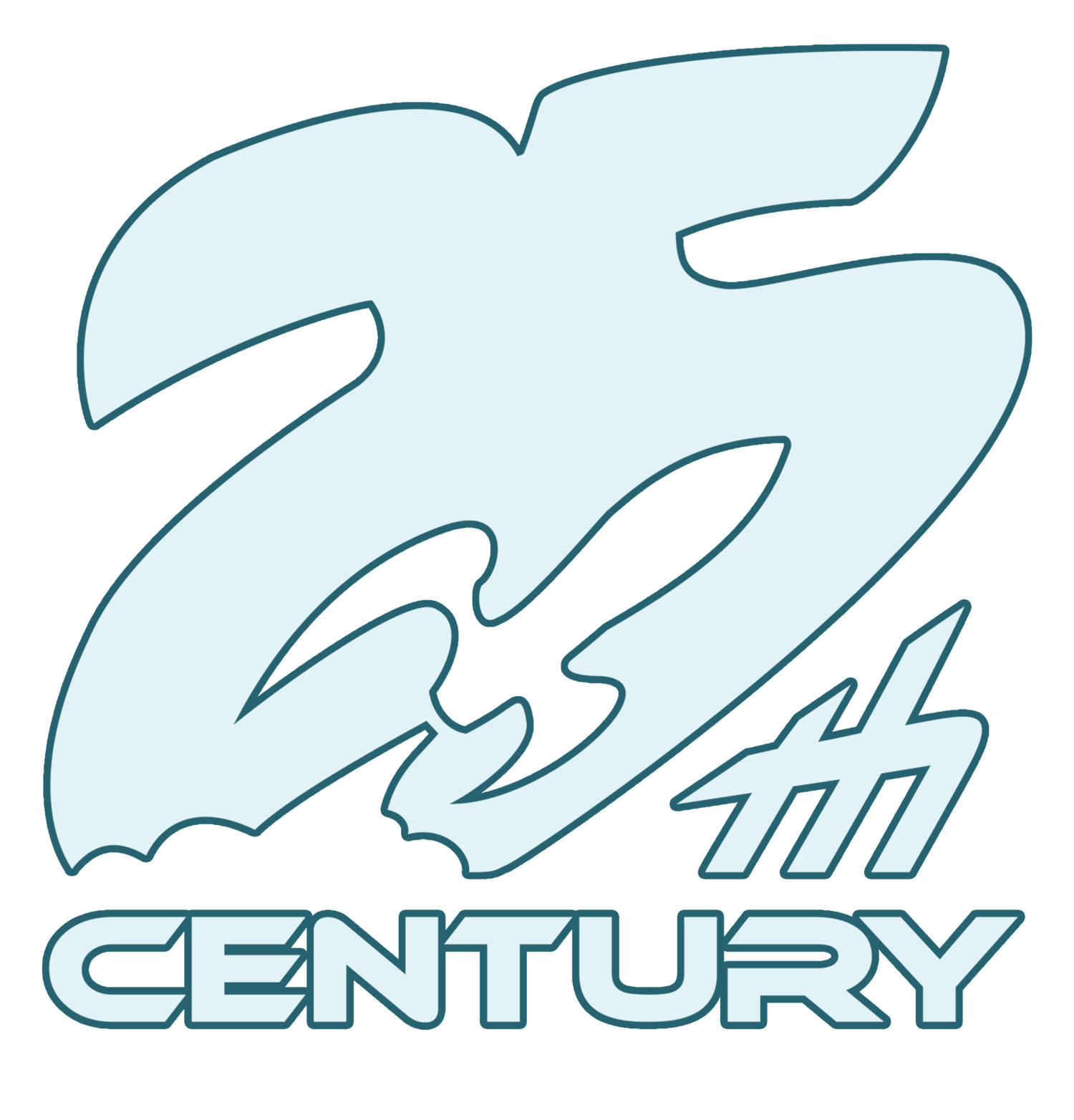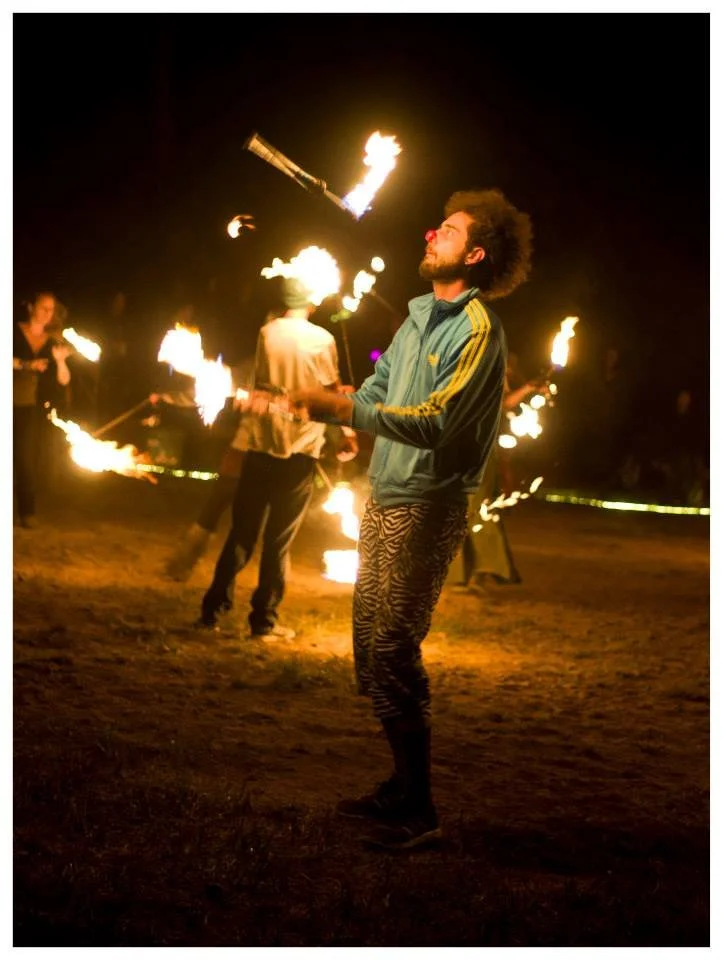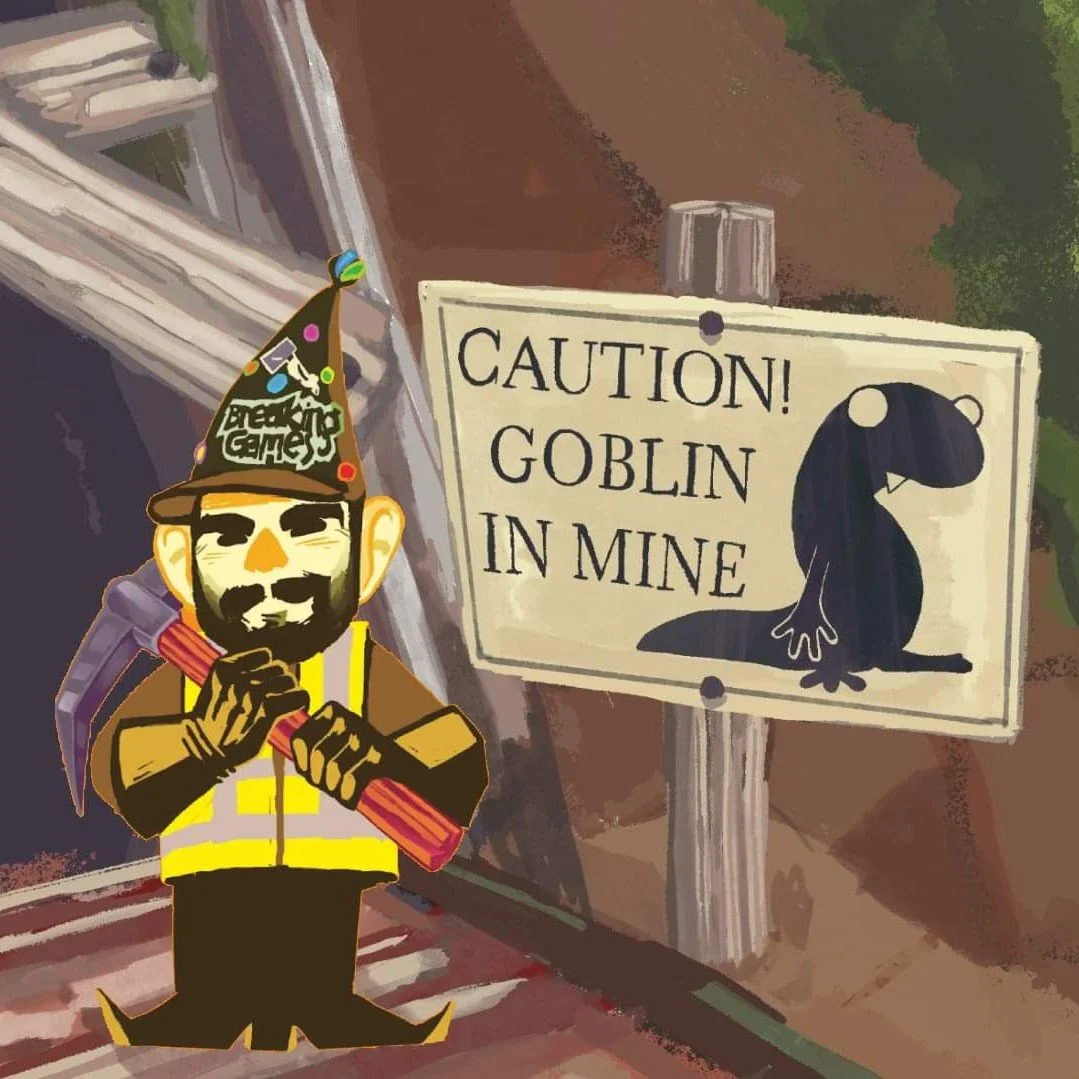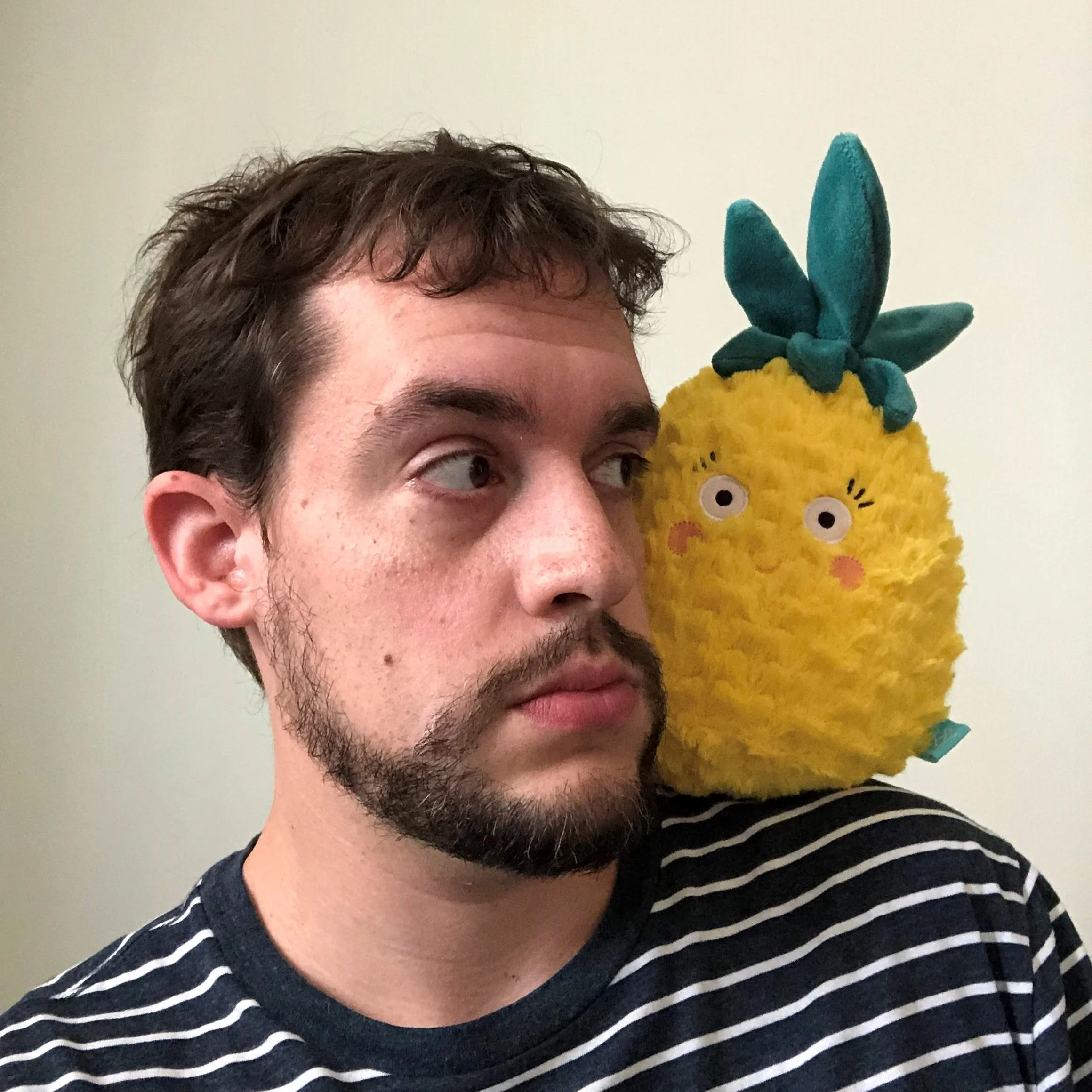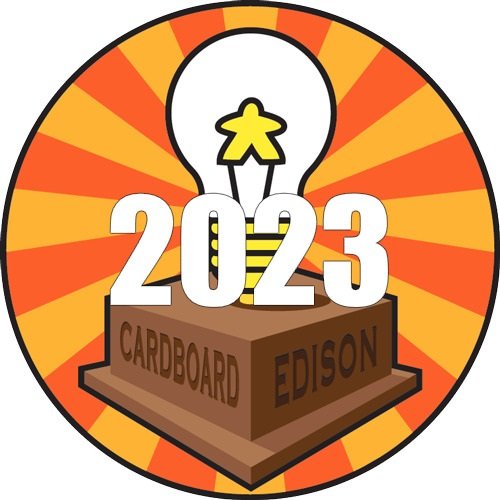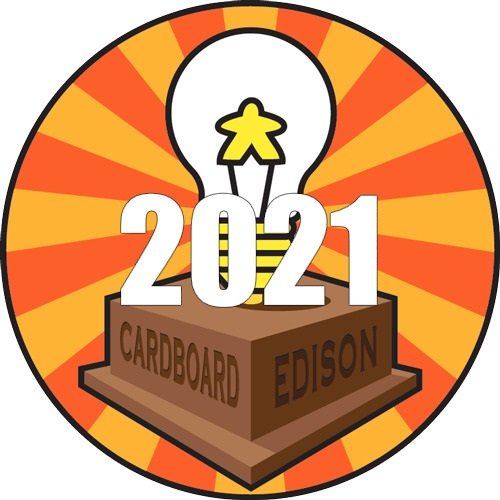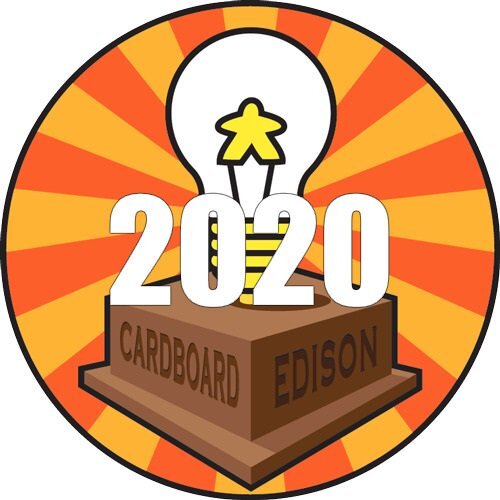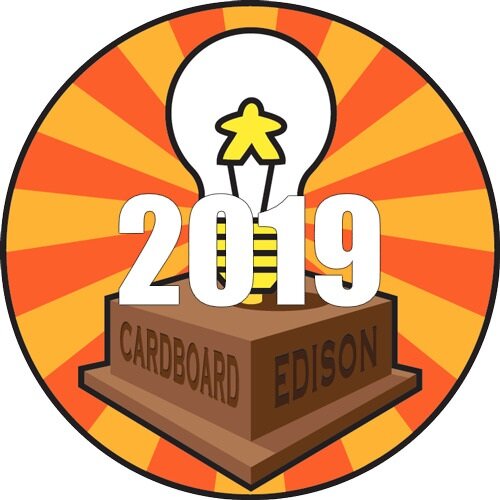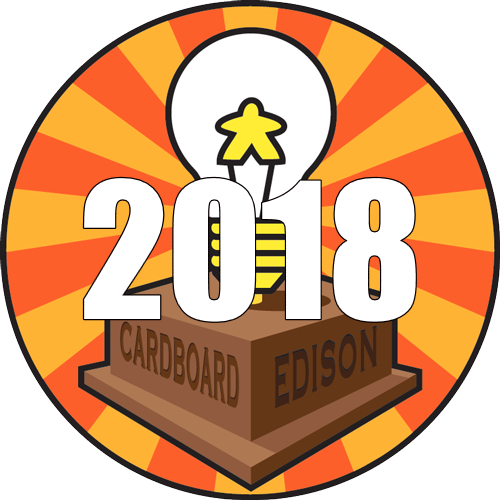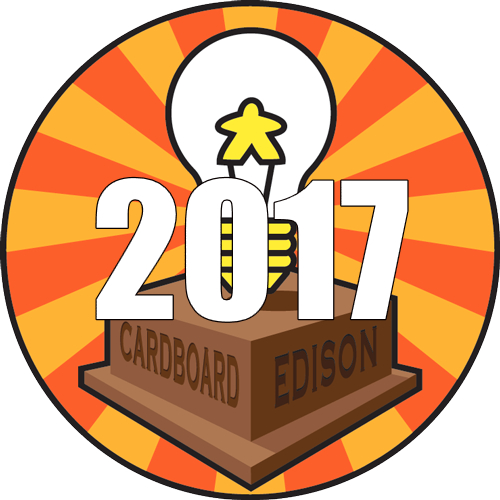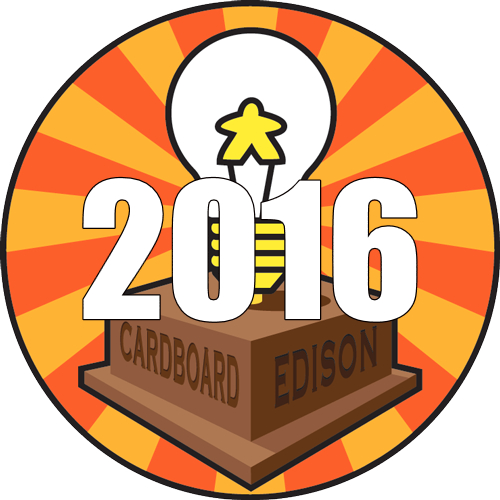Announcing the winners of the 2023 Cardboard Edison Award!
The Cardboard Edison Award recognizes great unpublished board games
Winner: Diatoms
Diatoms
Designer: Sabrina Culyba | @saeru @ludoliminal
In Diatoms, you vie with your fellow players to collect and place diatom tiles to create mosaics. Take turns placing tiles representing algae colonies, earning diatoms of different colors and shapes. Then strategically place these diatoms on your own mosaic, taking care to consider how your arrangement will be scored by the judges at the end of the game. Everyone will create a unique, shimmery mosaic, but only one player will win first place for their microscopic art!
Judges’ comments on Diatoms:
“Superb organization of mechanics, with lots of excellent choice points. I think the sampling mechanic is really lovely. There is so much really delicious nuance to this game. Incredible mechanic/thematic integration, elegant gameplay, I'm really quite in awe.”
“Beautiful game, and lots of great decisions using different parts of your brain.”
“The theme is amazing and the game is equally engaging. Each mechanic works seamlessly with the others and really puts the player in the world of the game.”
“This was outstanding. I played it multiple times and enjoyed the experience each time.”
“I had really good feelings about this one after the pitch video and I'm so happy to say that it delivered on every promise. The gameplay is thematic, engaging, puzzly, welcoming, and surprising.”
“This is truly one of the best games I've ever played.”
About the designer:
Sabrina Culyba (she/her) is a game designer whose professional work has spanned online games, VR, mobile apps, theme-park attractions, books, and board games. Through her company, Ludoliminal, she creates unique games with a design focus on experiences for kids and adults to co-play together. She serves on the board for Global Game Jam and co-hosts the yearly XR Brain Jam at the Games for Change Festival. Sabrina lives in Pittsburgh with her amazing partner and their two small humans. Once you've finished reading this, she suggests you look up "diatom microscopic art" and follow her into the niche rabbit-hole of this obscure artform.
1st Runner-Up: Swords Over Scotland
Swords Over Scotland
Designer: Myles Wallace | @MWGameDesigns
The British leaving was just the beginning. In Swords Over Scotland, the year is 1314 and now turmoil has descended upon Scotland. Each of you are aspiring leaders seeking to unite the clans and gain dominance over Scotland. This game combines bingo with area control in a unique, zero-luck battle game.
Judges’ comments on Swords Over Scotland:
“The bingo’ boards as deployment selection felt novel and provided both significant decision points and a feeling of control. The push and pull of getting cubes on the board before battles occurred but also trying to set up a multi-deployment round was satisfying.”
“The combat system is very elegant and simple. The deployment of troops is very intriguing, especially in combination with the powers by shape.”
“There are a lot of great design decisions here, big and small.”
“I love this game and was happy to play it multiple times. Each game was really fun.”
About the designer:
Hailing from Austin, Texas, Myles Wallace works for a nonprofit staffing agency and spends most of his free time designing and playing board games. There, he co-leads a flourishing local game design community. Myles believes the world is just a little too serious and tries to do his small part to make it more fun as well as give friends a reason to get together. Myles is proud to announce that Swords Over Scotland will be his second published title, coming to Kickstarter in the near future.
2nd Runner-Up: Quilted
Quilted
Designer: Tony Tran | @tonymakesgames
In Quilted, you assemble pieces of a communal quilt then pick the best pieces to use in your own personal quilt. Set your quilt patterns carefully in clever ways to score yourself points without setting up your opponents to score. Quilted centers on the positive feeling of building on each other’s successes. On your turn, you play a tile and score based on the growing board. The longer the run of matching pattern/color, the more points you score!
Judges’ comments on Quilted:
“The central ‘we cut you choose’ system is really fun! I love how the horizontal placement option creates some really interesting plays.”
“The phases of the game and how they complement each other is terrific. The game is very elegant. There are layers of depth that will keep players coming back for more.”
“This game is great. It's modest and unassuming, but there's a lot more going on than meets the eye.”
“Quilted is fantastic. It was a delight to play. Really nice work!”
About the designer:
Tony Tran always loved playing games. In 2014, he joined the Game Makers Guild Boston as a way to find like-minded people (he still calls Game Makers Guild his home for game design). Game design quickly blossomed into a permanent part of his life alongside his dental career. Over the years, Tony has worked to foster and grow the game design community by starting his own game design chapter (Game Makers Guild Nashville), mentoring in the Tabletop Mentorship Program, and organizing a game design convention (Nashville Game Design Fair). Tony's designs focus on bringing people together through highly interactive and approachable games. When he is not designing games, he enjoys training his cat, cooking with his wife, and playing Starcraft 2. His first published game, Kiss the Goblin, is coming out this upcoming July 2023.
3rd Runner-Up: Bizarre Manor
Bizarre Manor
Designers: Louis Blaise & Justine Vanhuffel | @dor_orange @Elbostar
Bizarre Manor is a puzzle and tile placement card game with objectives. You must design a whimsical manor by connecting room cards as best you can. Meet the very particular requirements of monstrous guests so that they come to your manor and not your neighbor's. The Great Manor mode asks you to work together to design one big manor.
Judges’ comments on Bizarre Manor:
“The pick-and-pass mechanism is solid, the art is SUPER cute and atmospheric, and the variations of play were really great.”
“Bizarre Manor is a really fun game to play with almost unlimited replayability. It is easy to learn and play. I had so much fun just creating the manor that the first time I played I forgot about the scoring!”
“We got lots of laughs and conversation out of making our manors and investigating the things inside them.”
“I absolutely love this game and will buy it as soon as it is published.”
About the designers:
Being in graphics, 3D and motion design, Louis Blaise and Justine Vanhuffel have always liked creating stories and worlds. When Louis was 10 years old, he would ask for several boxes of Hero Quest at Christmas to create campaigns while Justine was playing The Mad Magazine game. They discovered modern games in the mid-2000s and, after a long period of time without playing, started their creation adventure in 2020. Since then, they have discovered the pleasure of going to conventions and getting other people to play their creations. Manoir Bizarre was born last summer and is part of several projects that they are leading together or solo. Their first game, a party game, will be published in 2024.
Finalists
Crossword Crossfire
Designer: Nicholas J. Reese
Crossword Crossfire is a 2-player word game that combines the logic of Battleship, the word-building of Scrabble, and adds strategic twists. Players take turns adding ships (words) into their fleet or sending them out to attack. Their attacking ships will reveal letters in the words on their opponent's side, and once a word has been completely revealed, that ship is sunk. The first player to sink all their opponent’s ships wins!
Droplets
Designer: Ben Morayta
Multiplayer abstract game of tactical placement and chain reaction, where you need to plan not only where your next droplet will drip, but also every chain reaction it will trigger around. You place two droplets each turn on any of the dripping spaces. As droplets accumulate, they splash to adjacent spaces. In turn, those can cause a series of other splashes, but not always in your favor, and not always under your control. The player that splashes the most droplets onto the fountains at the edge of the board wins the game.
Fireworks Festival
Designer: Jason Mowery
There’s a global celebration going on, and major cities around the world will participate in a massive, international fireworks festival! You’ll take on the role of Paris, New York City, Cairo, or Sydney and compete to show that your city can put on the most beautiful and thrilling fireworks display on Earth. Plan your show, light up the sky, dazzle your city’s crowds, and bring home the victory in the very first worldwide Fireworks Festival!
Gnome Hollow
Designer: Ammon Anderson
Gnome Hollow is a spatial, tile placement, worker placement game where you grow a tabletop garden of mushrooms and flowers. Players strategically place tiles and develop rings of valuable mushrooms. Once completed they harvest each mushroom and eventually carry them to market to sell for the shiniest treasures available in the hollow.
Gods' Throwdown
Designers: Konstantinos Karagiannis & Alex Kapidakis
The Era of Gods is upon us, but can you become the god with the most followers in this exciting game that combines dexterity/worker-throwing and light euro game elements? Well, throw your acolytes to collect resources, build monuments in your name, get unique abilities and impress your followers to become their true god!
Kali Yuga
Designers: Trijeet & Gurdane Sethi
Kali Yuga is a deck-building worker-placement strategy game inspired by South Asian culture. Players race to garner support for their cause to become the one who brings an end to Kali Yuga: the Age of Despair. Protect humanity from calamity, recruit followers, and win the favor of kings in this fast-paced multi-objective strategy game.
Leukocytes
Designers: Juan Pablo Vargas Seguel
Leukocytes is a competitive, asymmetric board game where you take control of a pathogen (a virus or bacteria) or the immune system during an infection. As the Pathogens, you will try to infect the tissue by using a deck-building mechanic, with Infection cards that let you move your pieces across the board, multiplicate them, infect cells, and inflict damage. As the Immune system, you will try to eradicate the infection by deploying different types of leukocytes (white blood cells) in the infected tissue.
The Nights of King Ludd
Designers: Yoni Goldstein
The Nights of King Ludd is a cooperative game about sabotage at the dawn of the industrial revolution. Players will distribute their cards through a common “gift economy” and activate their effects to carry out armed raids and conspiracies. Bold risks and crushing sacrifices must be taken on to escape the Crown's reprisals.
Positano
Designer: Jeff Grisenthwaite
Build, block, and bid for the best ocean views! Positano is a city-builder, in which players build on a cliffside in an Italian resort village but only score points for rooms with ocean views. It features unique mechanics: two-card bid / triple draft and ocean view building. Positano hits that sweet spot of being inviting to families, while offering gamers high-stakes bidding, strategic drafting, and take-that maneuvers.
Timelancers
Designer: Kenny Heidt, Lee Ho, Juliana Chang, Teresa Ho
Timelancers is a time travel-themed set collection board game that utilizes worker movement and a modular game board. Players gather resources and travel back through time collecting historical events in order to earn victory points.
’Twas
Designer: Drea Bim & Illy Borden
‘Twas is an area control game which captures the spirit of the holidays. Thematically players act as Gift Givers from different cultural traditions, who, with the assistance of their helpers, engage in a little friendly (and mischievous) competition. Who among them can deliver the most gifts before sunrise on Christmas morning?
Vespaw
Designer: John Glynn
Vespaw is a pickup-and-deliver route-building game where players compete over six rounds for a variety of different victory points. Players will share the pawn of a stray dog named Buttercup along with their own scooter pawn. This dynamic creates surprising solutions from one delivery to the next. Keep in mind that where you leave Buttercup at the end of your turn affects how the next player may use her during their turn. Earn the most victory points to win the game and become the new owner of this talented, lovable dog.
Timeline for the 2023 Cardboard Edison Award
January 1: submissions open
January 31: submissions close
February: first-round judging
late February: finalists announced
April 17: finalist prototypes due
April-May: finalist judging
May: winners announced
Cardboard Edison Best Practices 2023
Out now! Our annual Cardboard Edison Best Practices booklet, filled with board game design tips and resources, is back again this year! Lots of articles and interviews covering all steps of the board game design process!
In this year’s book, you’ll find:
tips from past winners of the Cardboard Edison Award
pointers for putting together a contest submission
when (and when not) to make your game more thematic
what to know if you’re thinking of jumping into publishing
a board game design checklist
and LOTS more! Check it out!
Sponsors for the 2023 Cardboard Edison Award
Alpha Player Sponsors
Meeple Sponsors
Judges for the 2023 Cardboard Edison Award
Click for judge’s bio.
See the results from previous years’ Cardboard Edison Award
Rules for the 2023 Cardboard Edison Award
Submissions:
Submissions must include a brief description of the game, a video overview, and a rules document, in addition to a $20 submission fee (or Patreon code). See the submissions page for full guidelines.
Judging process:
Submissions will go through two rounds of judging.
First-round submissions will be judged based on engagement, originality of theme, and originality of mechanics. Finalists will additionally be judged based on engagement, smoothness of play, and fit for target audience.
Finalists will need to mail us a physical prototype for final in-person judging. Prototypes must be received no later than April 17.
All submissions will receive pitch feedback from the judges. Finalists will receive full feedback from the judges.
One design will be chosen as the winner, at the judges' discretion. We may also name runners-up.
Restrictions:
To be eligible for the award, designs must not be publicly available through any retail, secondary, or print-on-demand market, including Kickstarter, before June 2023.
Designs may not be licensed to a publisher during the period of the award. Additionally, we ask that designers refrain from holding licensing discussions with publishers about any submitted design while it is being evaluated for the award.
Designers must be 18 years or older to enter.
Cardboard Edison Award judges are not eligible to enter.
Designs must be original works that do not infringe on any intellectual property.
Board, card, and dice games are eligible. Sorry, no RPGs or videogames.
Designs should be complete and playtested before being submitted. Prototypes do not need to have final artwork or graphics, but they should be clear and usable.
All designs remain the intellectual property of the designers.
FAQs
Can non-U.S. designers participate?
Yes! There are only two restrictions. First, the rulebook must be in English, and the components must be either in English or language-neutral. And second, you must be able to mail a physical copy of the prototype to the U.S. if your design is chosen as a finalist.
Can I submit more than one design?
Yes, you may submit as many designs as you want, as long as you pay the entry fee for each.
Is the award only for new designers, or can published designers participate?
The Cardboard Edison Award is open to unpublished games from both new and published designers. As long as the game isn’t publicly available for purchase or licensed to a publisher, it’s eligible.
Is my design eligible if it’s going to be on Kickstarter?
Sorry, the award is for designs that aren’t available as a final product. That includes any games that are on Kickstarter or will be before June 2023.
What if the design was released as a free print-and-play?
That’s fine, as long as it hasn’t been made available for purchase as a final product. But games that are available to purchase through print-on-demand outlets such as The Game Crafter or DriveThruCards aren’t eligible.
Why can't I discuss licensing with publishers while participating in the award?
Many of our judges are publishers, and they often express interest in designs that have been submitted. But to maintain the integrity of the judging process, we ask judges not to reach out to designers whose games are in the running. So we ask designers to politely hold off on any licensing discussions with publishers until everyone can approach the games on the same ground.
How finished does the game have to be?
There’s no hard and fast rule, but we expect that you’ll have thoroughly playtested the game and that it’s complete, or close to it, before submitting it. Complete games will naturally score better with the judges.
I submitted my game to the Cardboard Edison Award in a previous year. Can I submit it again this year?
Yes, as long as the game has undergone changes since then. We also suggest making a new pitch video that represents the current version of the game.
What if my game was a previous finalist? Can I re-submit it?
Finalists from prior years may re-submit their game if the changes made in the interim are substantial enough to make it a different game.
Is it OK if I know some of the judges personally?
Yes. To head off any conflicts of interest, each submission will be reviewed by multiple judges, and we'll aim to have judges review submissions by designers they don't know.
Why do I have to make a video?
Video submissions have been used to great effect in game design contests (including ours), and we think it's the best way of letting you highlight what's interesting about your game.
What needs to be in the video?
Use the video to tell us about the game and how it plays. Give a sense of what players do in the game, and highlight what makes it unique and engaging. You don’t need to provide a full rules explanation or playthrough. And keep it brief. No more than 5 minutes. (And shorter is better.) Your video can be as simple or complex as you wish, but we won't be looking at the video's production values when we evaluate the submissions.
Do I need to be in the video?
No. If you'd rather not have your face or voice appear in it, your video can describe the game using visuals and text. One option we'd recommend looking into is Adobe Spark Video.
What if the video is more than five minutes long?
We tell judges to not feel obligated to keep watching past the five-minute mark.
Will there be an online track this year?
Unfortunately, no. Due to waning interest in online testing, we have found it increasingly difficult to coordinate a fair number of tests for online finalists, so we decided not to offer an online track this year.
What will the submission fee be used for?
The submission fee will help offset the costs of the award itself. The most significant expense will be the final judging events. Judges need to eat! Neither we nor the judges are paid for doing the award. In the interest of transparency, we would add that over the first seven years of the award, we’ve come out more or less break-even financially. We aren’t doing this for the money!
Will I get feedback even if my design isn't chosen as a finalist?
Yes! We will pass along notes from the judges that evaluate your submission.
How many finalists will be chosen?
We will select between 10 and 20 finalists in the first round of judging. We also might give some games honorable mentions.
If my game is chosen as a finalist, can I make changes before sending in the prototype?
Yes! We hope the judges’ feedback helps you refine your game in time for finalist judging. We also strongly suggest that finalists blind-test their rulebooks before finalist judging.
What do I get if I win?
We created the Cardboard Edison Award to recognize great unpublished game designs. We’ll promote the winning designs on our website and through social media. Also, the winners can use the award logo in any marketing materials for their design. In addition, all finalists will receive in-depth, detailed feedback from the judges’ panel.
What has happened to previous winners?
2016: The Blood of an Englishman, published by Renegade Game Studios. 2017: Castell, published by Renegade. 2018: Animal Kingdoms, published by Galactic Raptor Games. 2019: Umbra Via, published by Pandasaurus Games. 2020: The Transcontinental, successfully Kickstarted. 2021: Winter, published by Devir; Octopus Scramble, signed by Sit Down!
Can I get my prototype back after final judging?
Yes, we can send your prototype back to you or to a third party, if you like.
